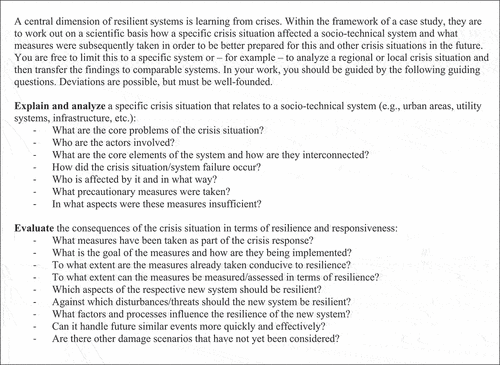Figures & data
Table 1. Intended learning outcomes at course level (see also Winkens & Leicht-Scholten, Citation2022).
Table 2. Assessment changes.
Figure 1. Self-assessment results for content- and methods-related resilience competencies before (n = 21) and after (n = 13) the course 2022.

Table 3. Overall course schedule.
Table 4. Items of the pre-post survey (* marks items that were only queried in 2022).
Table 5. Results of the pre-post survey, bold: significant at p < 0.01, * only evaluated in 2022.
Figure 2. Self-assessment results for content- and methods-related resilience competencies before (n = 20) and after (n = 12) the course 2021.

Figure 3. Self-assessment results for professional competencies before (n = 21) and after (n = 13) the course 2022.

Figure 4. Self-assessment results for professional competencies before (n = 20) and after (n = 12) the course 2021.

Table A1. Questions for the reflective diaries (adapted from Wallin & Adawi, Citation2018; Wallin, Adawi, & Gold, Citation2016.)
Table A2. Shapiro-Wilk-Test.
Data availability statement
The authors confirm that the data supporting the findings of this study are available within this article.

